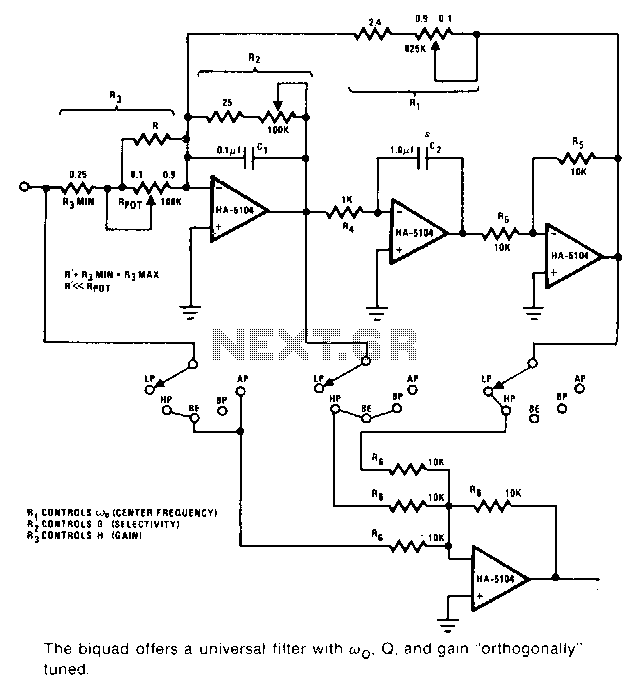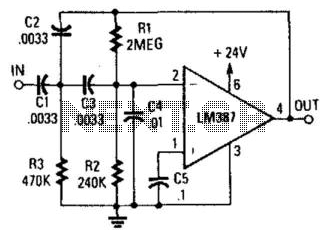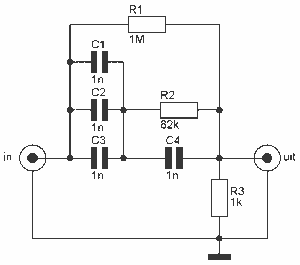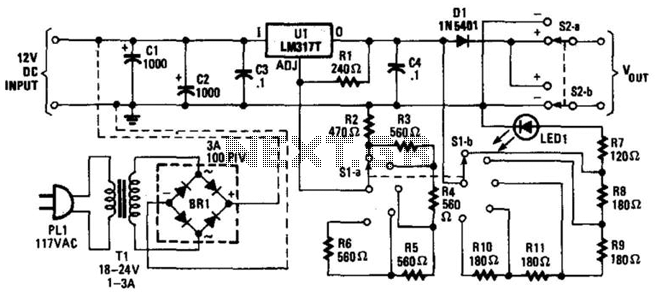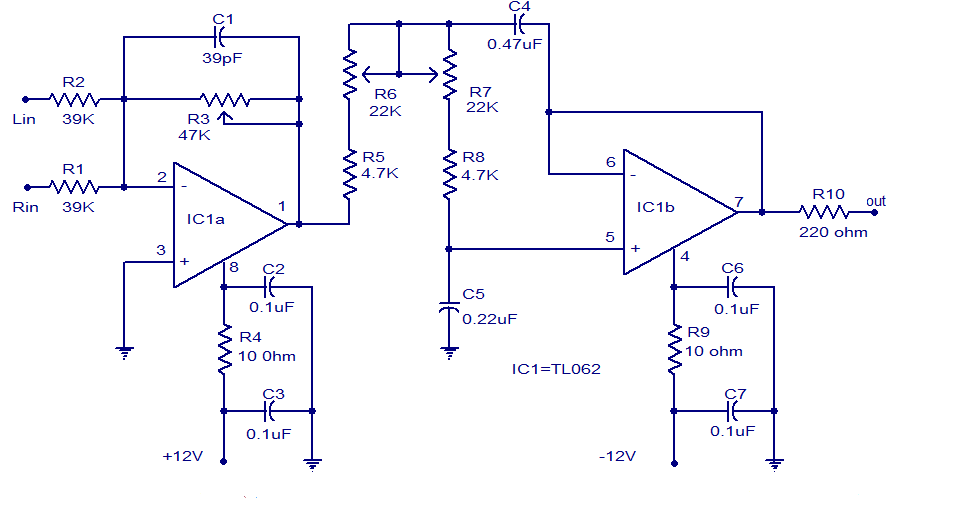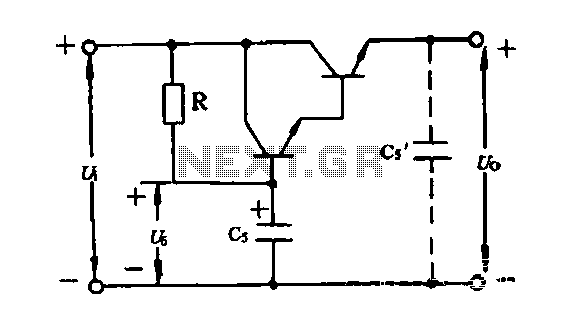
Variable filter
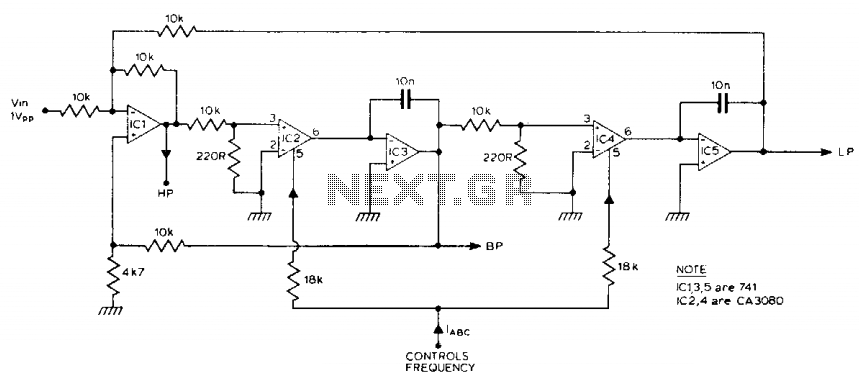
The filter generates three outputs: high-pass, bandpass, and low-pass. The frequency is linearly proportional to the gain of two integrators. Two CA3080 operational amplifiers (IC2, IC4) provide variable gain, with the resonant frequency being proportional to the current. Using 741 operational amplifiers for IC3a allows for a control range of 100 to 1 for the resonant frequency. If CA3140 operational amplifiers are used instead of 741s, this range can be extended to nearly 10,000 to 1.
The described circuit is a versatile filter capable of producing three distinct output types: high-pass, bandpass, and low-pass. The fundamental operation of the filter is based on the linear relationship between frequency and the gain of two integrators, which are key components in shaping the filter's response characteristics.
The use of CA3080 operational amplifiers (IC2 and IC4) is significant as they are designed for high-performance analog applications, particularly in variable gain configurations. The gain adjustment facilitated by these amplifiers directly influences the resonant frequency of the filter circuit, which is a critical parameter in determining the filter's behavior and its application in signal processing.
The integration of 741 operational amplifiers in the circuit serves to provide a control range for the resonant frequency of 100 to 1. This range allows for moderate flexibility in tuning the filter's response, making it suitable for various applications where precise frequency control is necessary.
An alternative configuration utilizing CA3140 operational amplifiers instead of the 741s offers a substantial increase in the control range, extending it to nearly 10,000 to 1. This enhancement significantly improves the filter's adaptability, allowing for finer adjustments and broader applications in complex electronic systems.
Overall, this filter design exemplifies an effective approach to achieving variable frequency response through the strategic selection of operational amplifiers and the implementation of integrator stages, making it a valuable component in advanced electronic circuit designs.The filter produces three outputs: high-pass, bandpass, and low-pass. Frequency is linearly proportional to the gain of the two integrators. Two CA3080's, (IC2, 4) provide the variable gain, the resonant frequency being proportional to the current ^. Using 741 op amps for IC3a control range of 100 to 1, (resonant frequency) can be obtained. If CA3140's are used instead of 741's then this range can be extended to nearly 10,000 to 1. 🔗 External reference
The described circuit is a versatile filter capable of producing three distinct output types: high-pass, bandpass, and low-pass. The fundamental operation of the filter is based on the linear relationship between frequency and the gain of two integrators, which are key components in shaping the filter's response characteristics.
The use of CA3080 operational amplifiers (IC2 and IC4) is significant as they are designed for high-performance analog applications, particularly in variable gain configurations. The gain adjustment facilitated by these amplifiers directly influences the resonant frequency of the filter circuit, which is a critical parameter in determining the filter's behavior and its application in signal processing.
The integration of 741 operational amplifiers in the circuit serves to provide a control range for the resonant frequency of 100 to 1. This range allows for moderate flexibility in tuning the filter's response, making it suitable for various applications where precise frequency control is necessary.
An alternative configuration utilizing CA3140 operational amplifiers instead of the 741s offers a substantial increase in the control range, extending it to nearly 10,000 to 1. This enhancement significantly improves the filter's adaptability, allowing for finer adjustments and broader applications in complex electronic systems.
Overall, this filter design exemplifies an effective approach to achieving variable frequency response through the strategic selection of operational amplifiers and the implementation of integrator stages, making it a valuable component in advanced electronic circuit designs.The filter produces three outputs: high-pass, bandpass, and low-pass. Frequency is linearly proportional to the gain of the two integrators. Two CA3080's, (IC2, 4) provide the variable gain, the resonant frequency being proportional to the current ^. Using 741 op amps for IC3a control range of 100 to 1, (resonant frequency) can be obtained. If CA3140's are used instead of 741's then this range can be extended to nearly 10,000 to 1. 🔗 External reference
